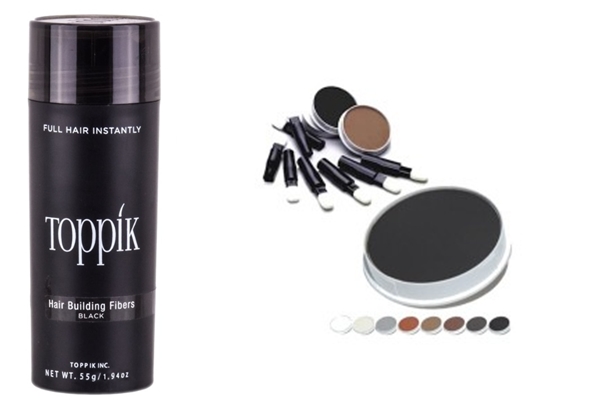
When people think of hair loss concealers they think of the old “hair in a can” that used to be advertised on late night infomercials in the 90’s, but the truth is like surgical hair restoration hair loss concealers have come a long way.
For many hair loss sufferers, hair loss concealers are a great way to create the “illusion of density”. But many prospective patients are worried about potentially damaging their delicate grafts after surgery. In this article, we will be discussing hair loss concealers after hair transplant surgery.
Which Concealer is Safe?
Hair loss concealers are safe and non-toxic. There is a variety of “cover up” products like Toppik that are applied to the scalp to conceal balding or thinning areas. These products increase the appearance of fullness and create an “illusion” of density.
Products like Toppik and DermMatch can enhance a hair transplant and increase visual density. However, patients shouldn’t rush to sprinkle Toppik or dab on DermMatch so quickly, because the grafts need to be given time to anchor into the scalp and the incision sites need to heal first.
When Can I Apply Concealers?
According to a study published by Dr. Robert Bernstein, member of the Independent Coalition of Hair Restoration Physicians, follicular unit grafts anchor into the body by day six, however, pulling on an adherent scab could result in a lost graft until day 8 following a hair restoration procedure.
Therefore, patients should be very careful not to apply “cover up” products such as Toppik or DermMatch to early because these products require shampoo and vigorous scrubbing to come off, scrubbing may damage or dislodge a healing graft.
Typically, patients can begin applying “cover up” products such as Toppik and DermMatch once all of the transplanted grafts have shed. Most patients begin to shed their transplanted grafts around the 3rd to the 4th week following surgery. During this time patients may experience some minor telogen effluvium or shock loss.
Products like Toppik and DermMatch can certainly help mitigate the effects of shock loss and provide the patient with a boost in visual density and fullness.
Conclusion
Hair loss concealers are safe to use after a hair transplant procedure, but some hair loss concealers require applicators, which could potentially damage healing grafts. It is important to allow the grafts to fully heal and anchor into the scalp before applying any form of hair loss concealers. Once the transplanted hairs are growing in, the hair loss concealers could certainly help provide a visual boost in density in fullness.

